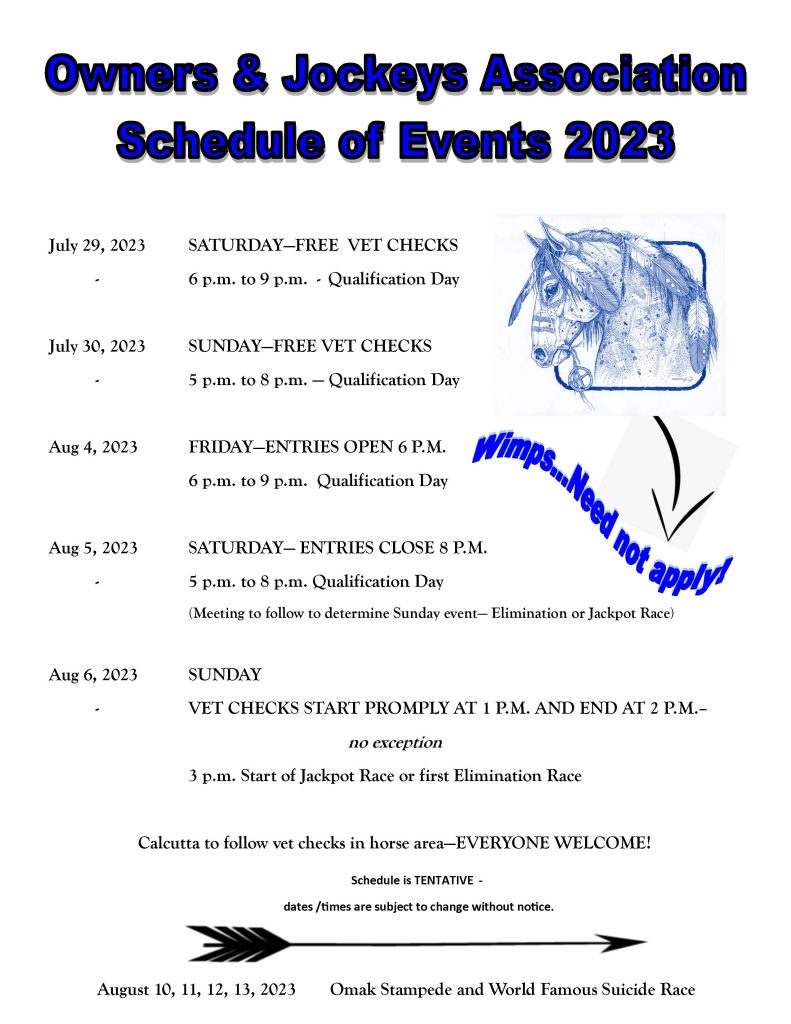Events Overview
Annual Omak Stampede
"ALWAYS THE 2ND WEEKEND IN AUGUST!"
We would like you to join us for a weekend of western entertainment that will be one of your fondest memories. From the first ride-in to the last running of the World-Famous Suicide Race, you will enjoy an action-packed weekend to include Paradise Amusements, Wrangler Kids Night, Indian Encampment & Pow Wow, Western & Native Art Show, Rodeo Dances and Vendor Row, Omak Stampede “Company Store”. As well, Omak Stampede continues to support the Tough Enough to Wear Pink Campaign.
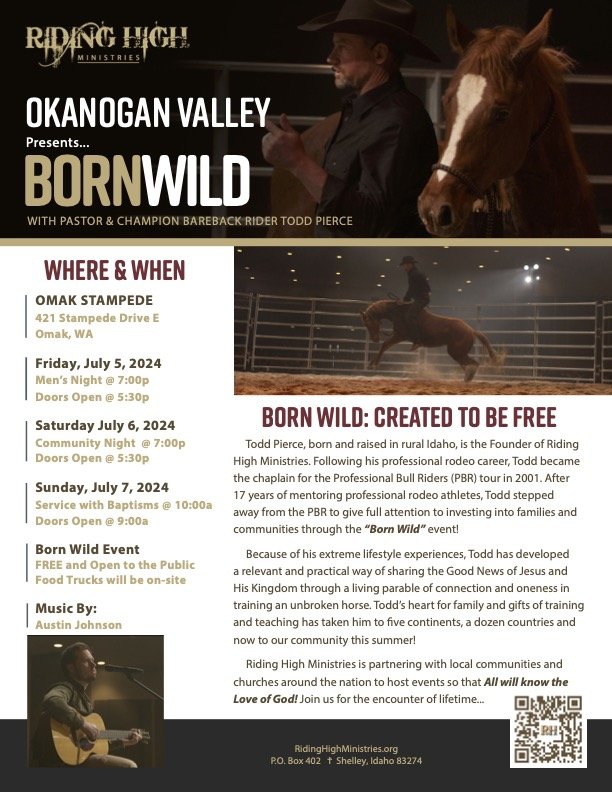
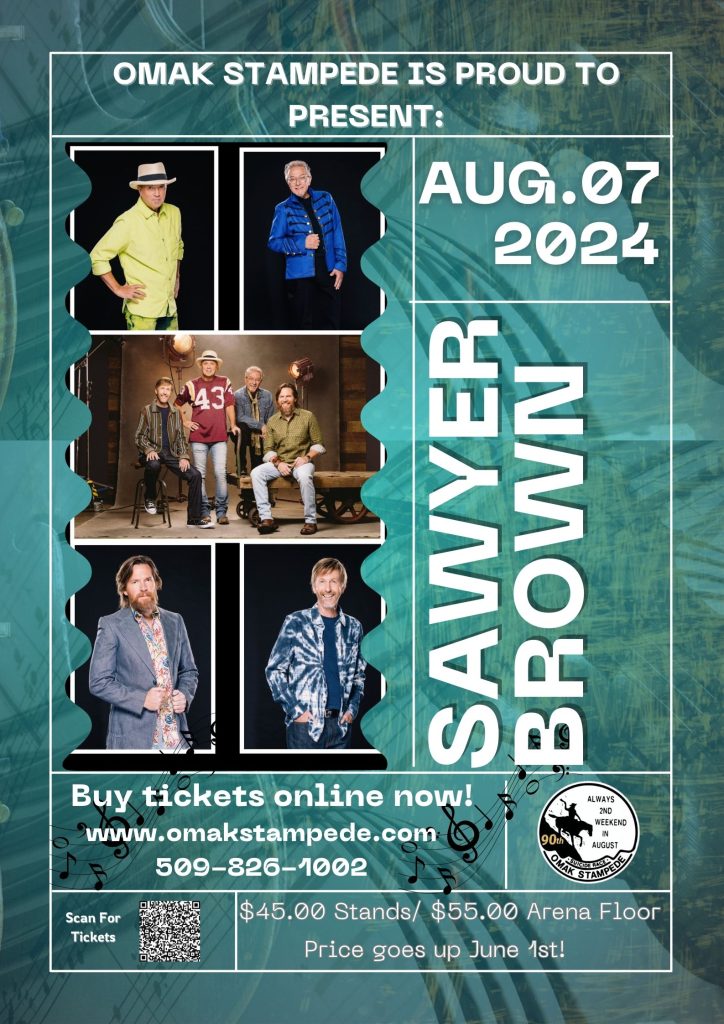
Boots & Barrels 2024 Schedule
April 7-10:00am
April 28- 10:00 am Double Header
May 12 – 10:00am
May 26-10:00 am Double Header
June 11- 6:00 pm
June 25-6:00pm
July 16 – 6:00 pm
August 20-6:00pm
September 15- 10:00 am Double Header
September 29 – 10:00 am
Omak Stampede Schedule & Events
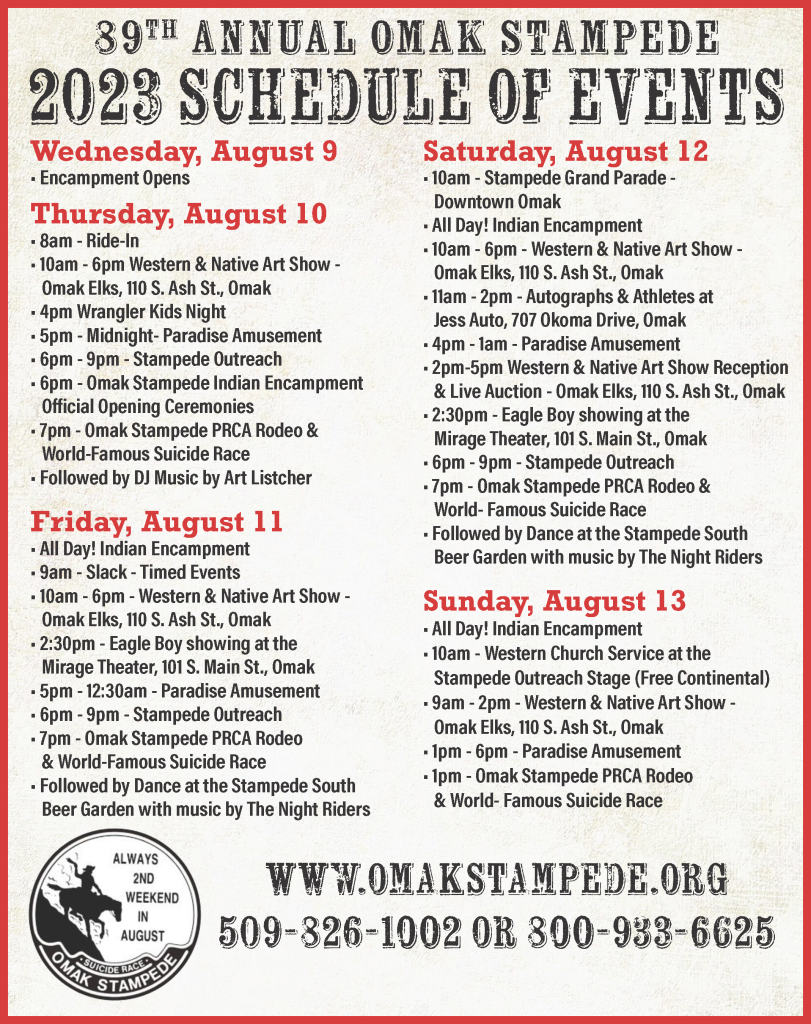
Omak Stampede PRCA Rodeo
Official Events
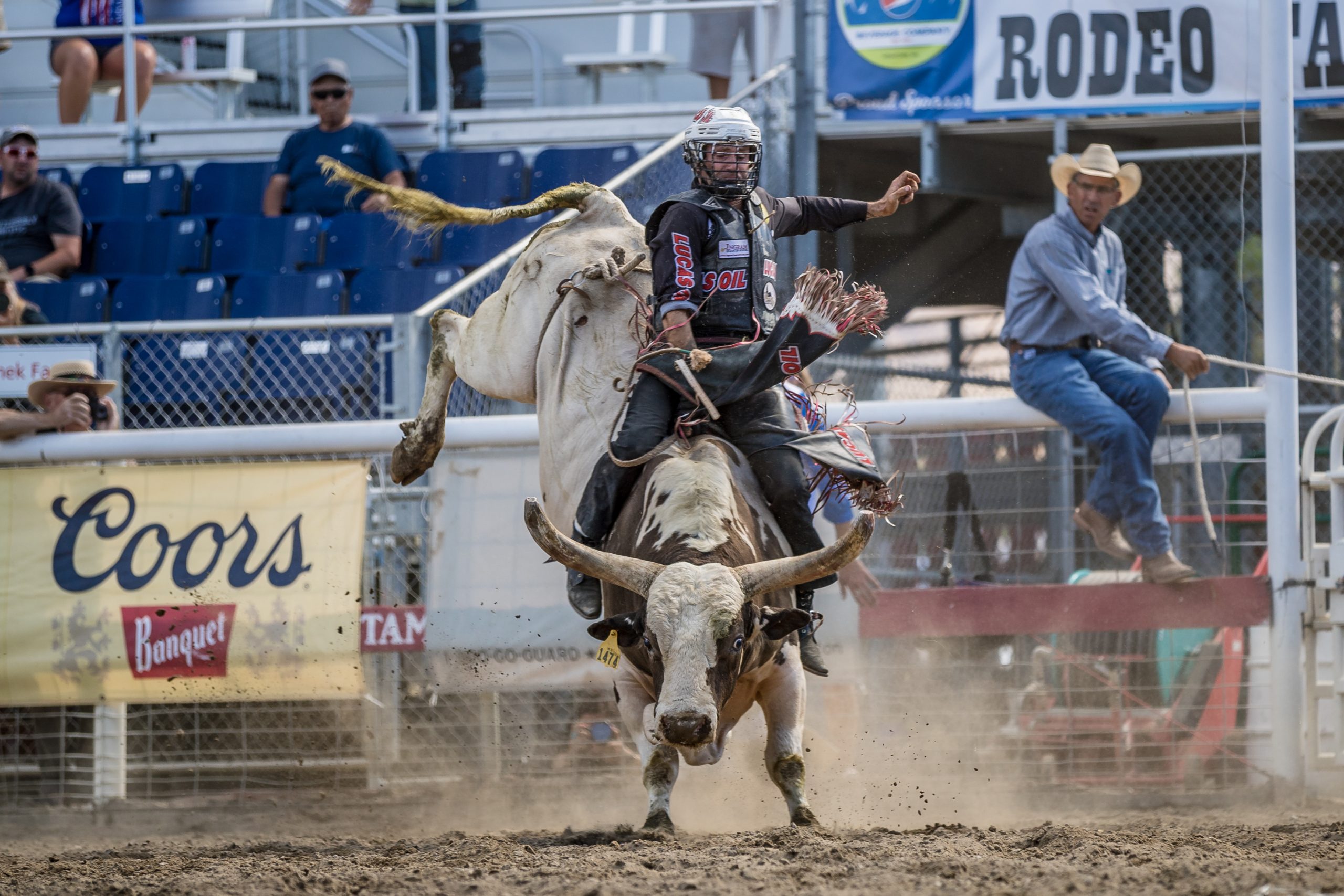
Bull Riding
In what is hoped to be an eight-second ride, the rider holds a flat-braided rope in his glove hand. As he settles onto his bull in the chute, he pulls the rope’s tail through a loop and wraps the rope around his riding hand, at times weaving it through his fingers for better grip. Each bull has a different style of bucking; some spin, others circle, others throw in jumps or kicks, and others move sideways in mid-air. As the cowboy waves his free hand to counter the bull’s gyration and maintain his balance, he must avoid touching the bull with his free hand or he is disqualified. The cowboy’s control and the bull’s bucking efforts each account for half of the score.
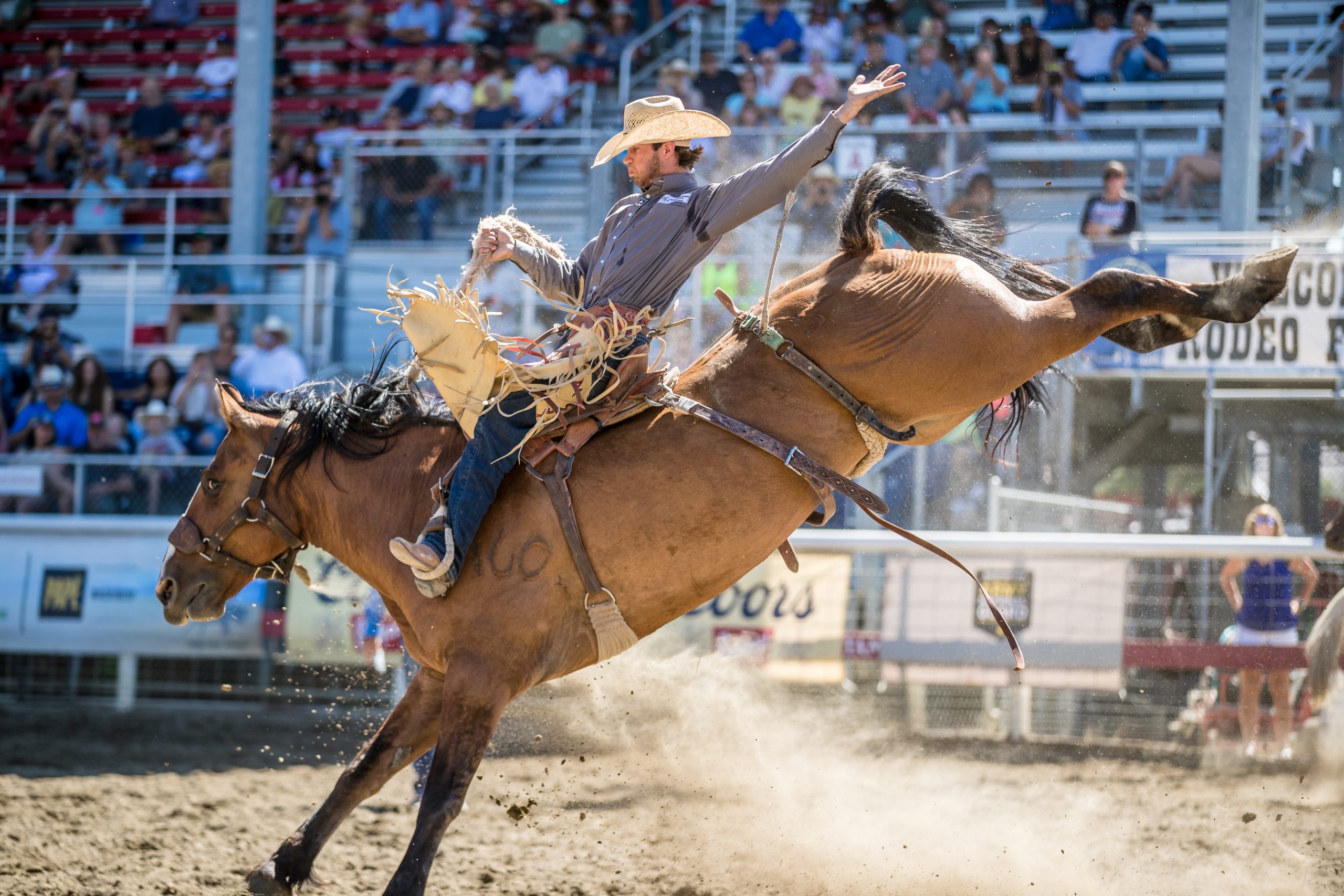
Saddle Bronc Riding
Unlike bareback riding, where the cowboy grabs a rigging fastened to the horse’s back, a saddle bronc rider grips a thick rein attached to the horse’s halter. He must then mark out the horse as in bareback riding. As the horse bucks, the rider bends his knees to pull his heels back and then snaps his feet back to the horse’s shoulder as the animal’s front feet hit the ground, synchronizing spurring with the horse’s movements. The rider is judged on spurring action, body control and the degree to which he keeps his toes turned out. The horse’s bucking action contributes to the score, just as in bareback riding.
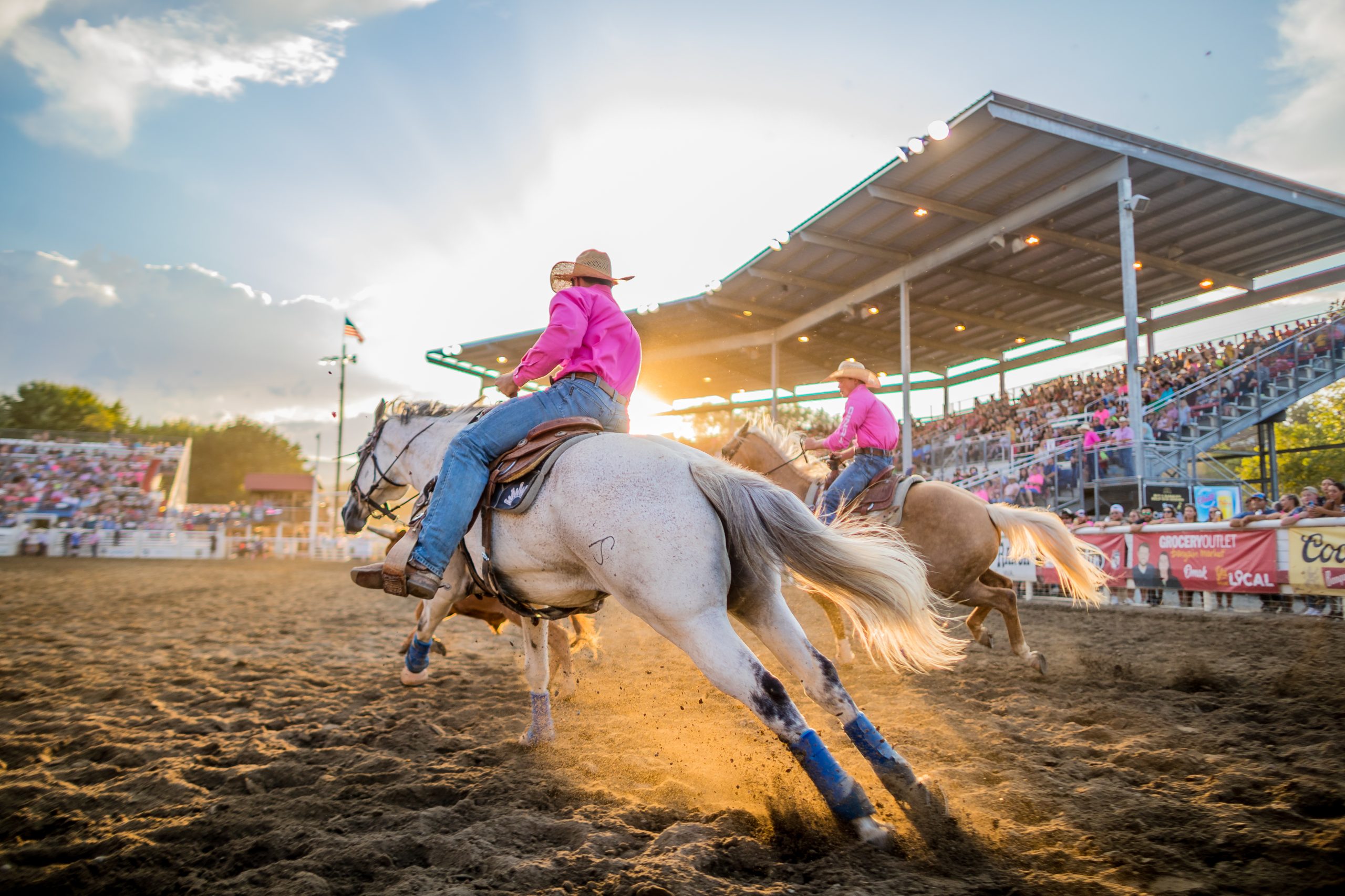
Bull Dogging/Steer Wrestling
Steer wrestlers, also known as bulldoggers, try to toss a steer onto its back after jumping off a quarter horse. Courage, timing and balance are essential. The objective: Get the steer on the ground the fastest using only strength and leverage. Done correctly, the event takes only three to five seconds. The cowboy starts his run behind a barrier with another cowboy called a hazer, who keeps the steer from turning away. The steer is then given a head start. When it reaches the “scoreline” and the rope barrier is released, the steer wrestler and the hazer chase the steer until the wrestler can make his jump. The wrestler then hooks his right arm around the steer’s right horn, grasps the left horn with his left hand and digs his heels into the dirt and uses leverage to bring down the animal.
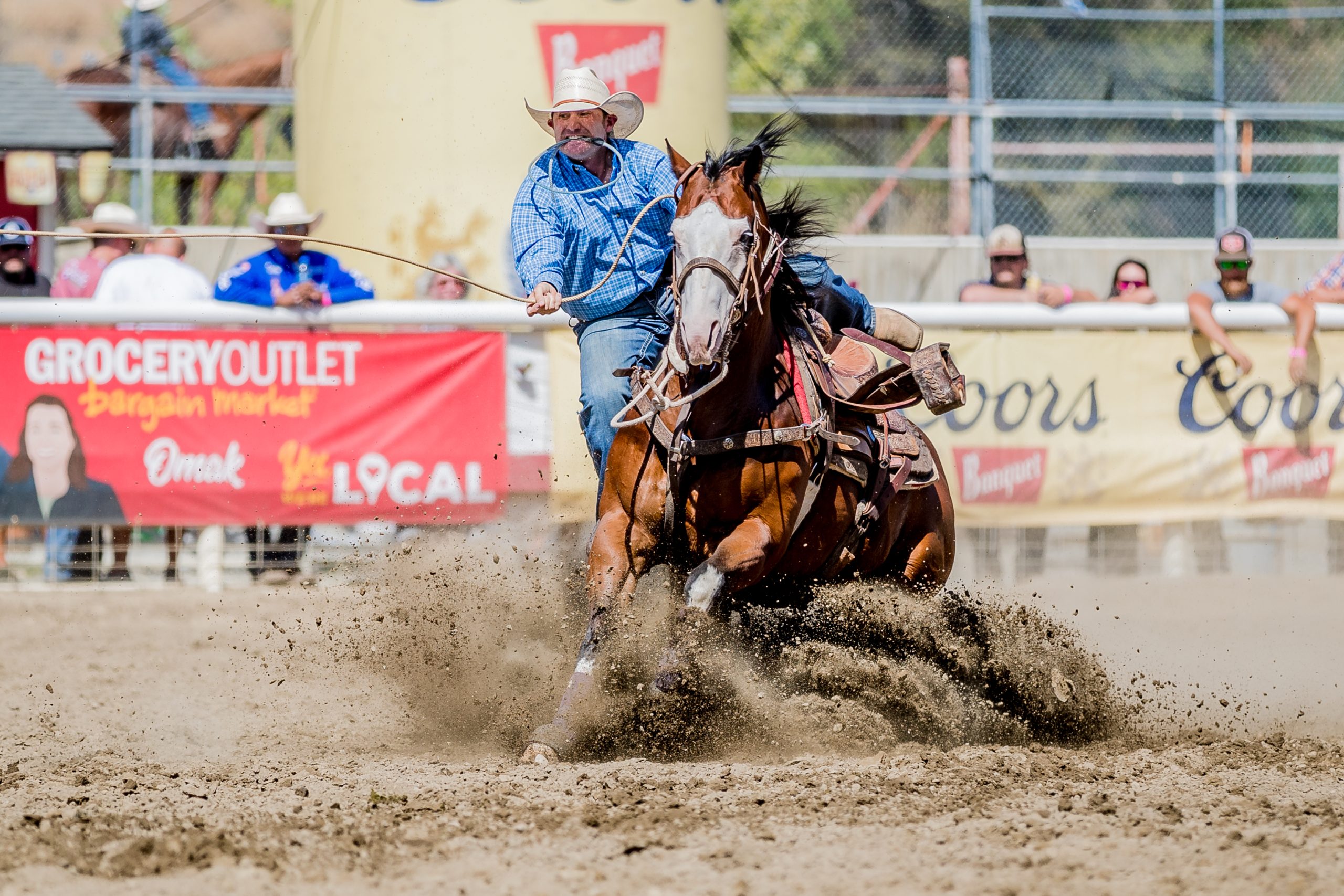
Tie-Down Riding
After giving the calf a head start, the horse and rider begin their chase. As the cowboy throws his loop, the horse comes to a stop. With his horse still skidding to a stop, the cowboy dismounts, runs to the calf, throws it to the ground and ties any three legs together with a “pigging string.” The horse must keep slack out of the rope but not pull so tight that the calf is dragged. When the roper finishes tying, he throws his hands in the air to signal to the flag judge. Then, he gets back on his horse and rides toward the calf, putting slack back into the rope. The calf must remain tied for six seconds after the rope is slack or the cowboy will receive a “no time.”
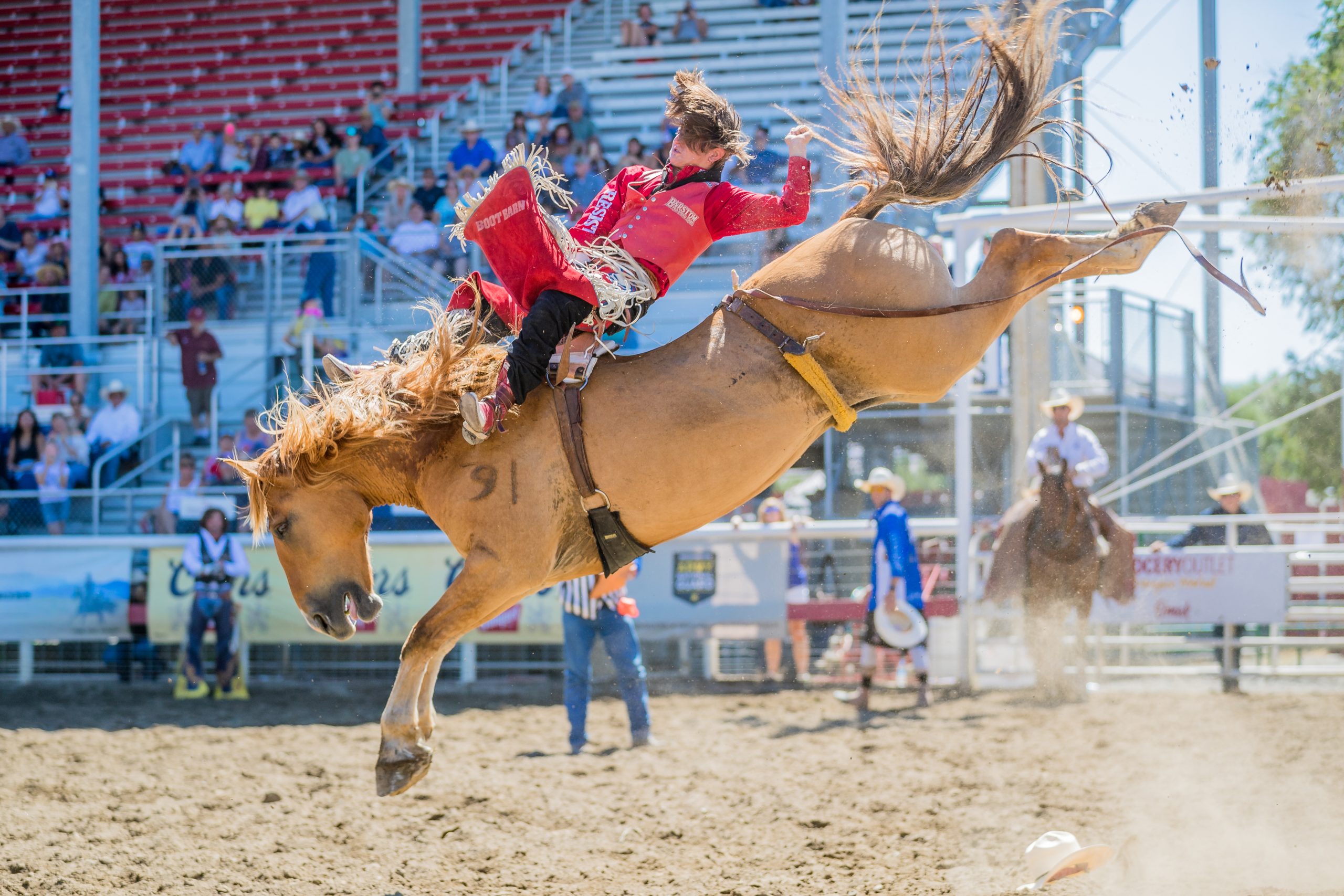
Bareback Riding
The most physically demanding event in a pro rodeo may be bareback riding. Cowboys use one hand to grasp a leather “rigging” to stay on the horse and are judged on their spurring technique and bucking action of the horse. To score higher points, riders must turn the toes of their boots outward and lean way back. No score will be given if the cowboy does not “mark out” the horse. Judges watch closely to ensure that as the horse comes out of the chute, the cowboy’s feet are above its shoulders. The feet must remain there until the horse’s front feet hit the ground. A bareback rider must remain on the animal for eight seconds.
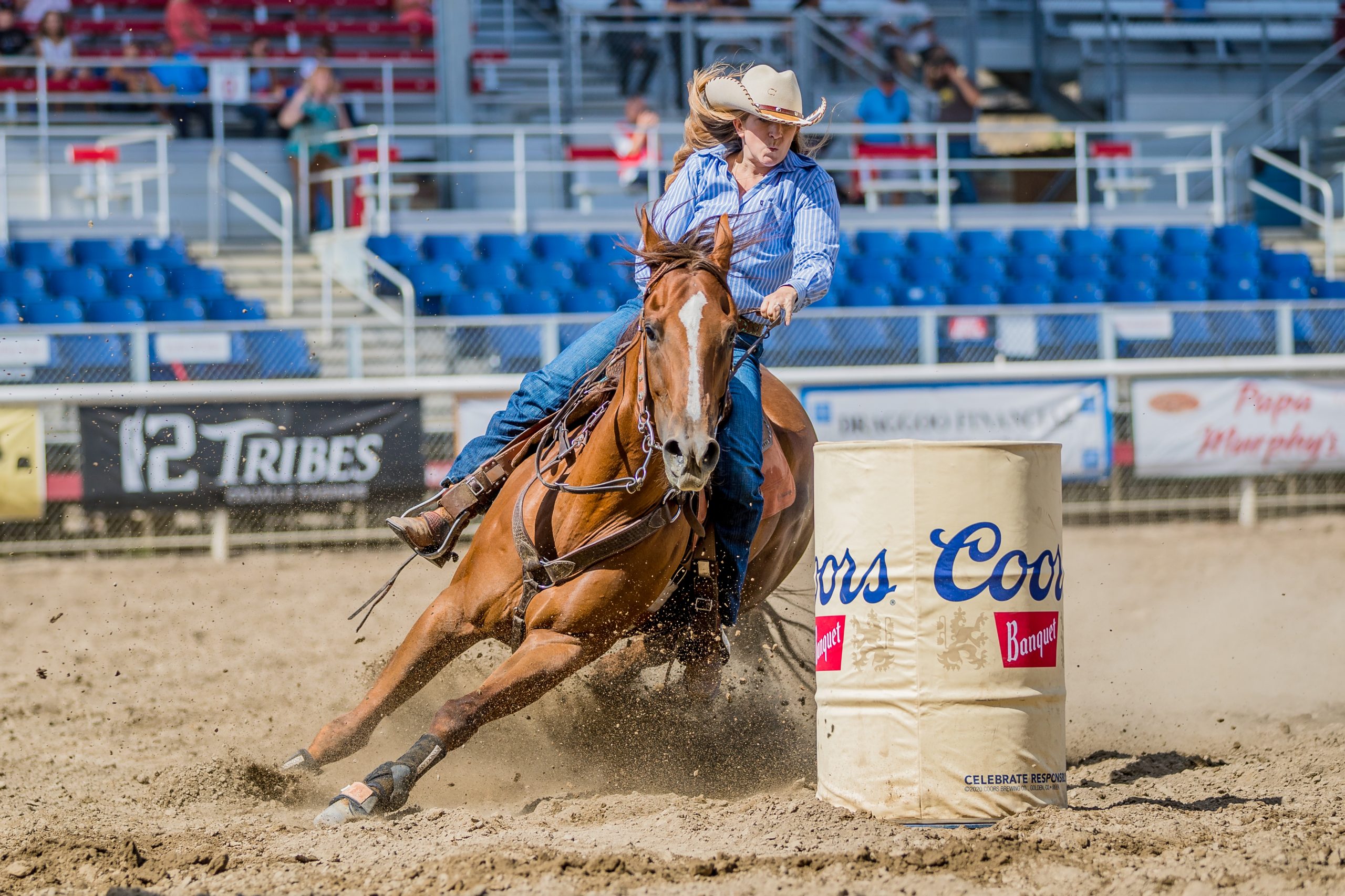
Barrel Racing
The goal of barrel racing is to run a cloverleaf pattern around three barrels in the fastest time. The horses pivot on their haunches at high speeds and execute each turn with only inches to spare. Normally, quarter horses are used in barrel racing. A knocked-over barrel incurs a five-second penalty.
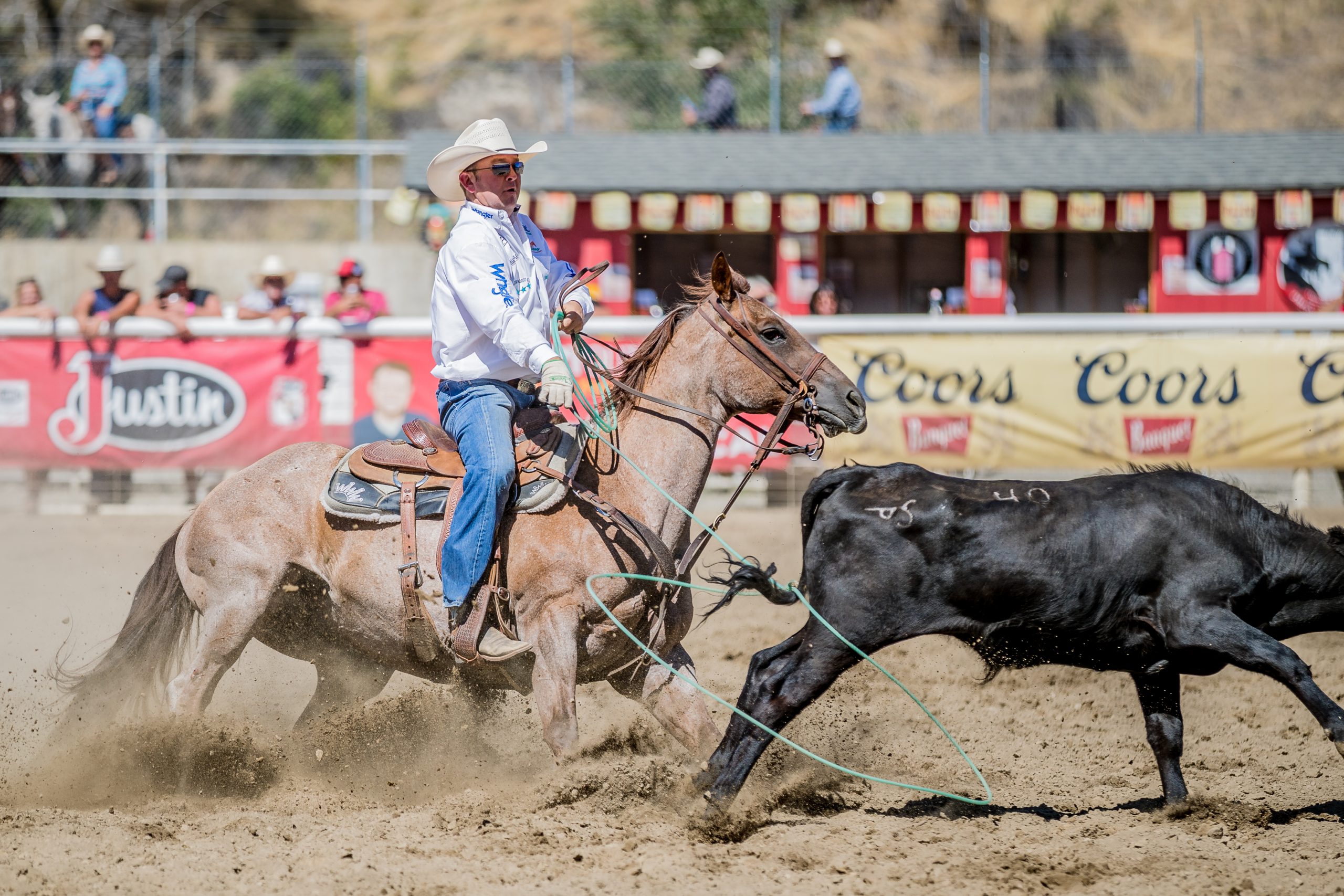
Team Roping
Team roping demands close cooperation between two cowboys (“header” and “heeler”) and their horses. The steer is given a head start as the header waits behind a rope barrier. If the header breaks the barrier, a 10-second penalty is assessed. The heeler follows. The header is the first one to rope and must catch the steer either around the horns, neck, or one horn and the head. As soon as the header secures the loop, he “dallies” the rope around the saddle horn and rides to the left, turning the steer away from a right-handed heeler. As the header rides away, the heeler tries to rope the steer’s hind feet. A five-second penalty is assessed if the heeler catches only one foot. The two riders then back their horses to take the slack out of their ropes. The clock stops when all the slack has been taken up and the ropers are facing one another.
Wrangler's Kid Night
Prior to Thursday Night's Performance - 4:00pm
There is also a best dressed cowboy and cowgirl contest. Our rodeo bullfighters, barrel man and royalty are also there to help out. There are prizes for everyone. On Thursday, Family Night, each adult can take two children 12 and younger to the rodeo for free with the purchase of an adult ticket in the family section of the arena. We would like to thank our long time sponsor, Wrangler, for their continued support. We also would like to thank Pepsi for beverages and prizes, Okanogan-Omak Rotary for sponsorship and Herriman Speedy Tank for the Best-Dressed Cowboy and Cowgirl awards.

World Famous Suicide Race
In the old days, local Indians gathered at prime fishing sites during the salmon runs to harvest and dry a winter’s supply of fish. A favorite gathering place at the junction of the Sanpoil and Columbia rivers, eventually became the site of Old Keller. The people camped there in late May to fish and prepare for the festivities that always followed the completion of the salmon harvest. The celebration of the salmon is an ancient custom among the tribes of the Columbia Plateau that for centuries depended on the fish for sustenance. It was a time of work, but when the work was through and every person had a supply of dried salmon; it was a time of celebration and ceremony. It was a time of visiting with family and friends, feasting, dancing, and performing the traditional ceremonies that sustained the spiritual life of the people.
Horse racing was sure to be a component of any gathering of Native Americans. A festive parade displaying the horses flamboyantly decorated and in their finest trappings, preceded the races. During this display there was intense speculation and betting on the outcome of the race, with each tribe or band remaining loyal to their own horses. Erskine Wood, adjutant to General O. O. Howard, Colville Reservation. He recalled, “It did not take long for the excitement to grow and soon the bets were showering down and the pile swelling visibly with such great rapidity that is was marvelous how account could be kept. Blankets, furs, saddles, knives, traps, tobacco, beads, whips and a hundred other things were staked.” Though Wood’s visit was part of extensive government negotiations, the Indians still manages to run an average of one horse race per hour during the course of the meeting.
When the necessity of storing up dried salmon for winter was just a memory, the tradition of meeting to celebrate, renew friendships and race horses continued. In the 1920s Hugh McShane, a white man married to a Colville Indian woman named Sadie Nee, began promoting Salmon Days as the Keller Rodeo. In addition to roping and bronc and bull riding, McShane encouraged the continuation of a thrilling and dangerous race called the mountain race.
The mountain race was a holdover from the days when Indian men proved their skill and courage on horseback by competing in daring contests. The race was a half mile, pell-mell down a nearly vertical, boulder-strewn chasm in the face of a mountain. From there the riders raced across a dry channel of the Sanpoil River and charged into the rodeo arena. It soon became the crowd’s favorite event. Long-time Keller resident Henry Kuehne recalled that his parent’s horse, Diamond, a percheron-Hambletonian cross, won the race twice under the ridership of Tex Martin, a San Poil Indian who was a professional bronc rider of local notoriety. Kuehne further noted that original race was far more treacherous than anything seen in modern times, saying, “That old race could really be a horse killer. Compared to it, the race they have now is pretty tame.
The riders would start the tortuous climb up the mountain early in the day so they could rest their horses when they got to the top. Many a rider who climbed to the starting line failed to run in the race, losing nerve after a look down the steep mountainside. When the riders were given the go-ahead by the starter, veritable chaos ensued. The outcome of the race was often decided by who made it first to a narrow split in the fence of a rock ledge about halfway down the mountain. In the dash to get there first, there were terrible pileups. Kuehne remembered, “Sometimes you’d just see a huge cloud of dust when they got to that gap, and then would come some riders, and after that the guys who fell off would come rolling down the hill.” It was hard to tell if the many bandages and bruises seen around town at rodeo time were from the mountain race, rough stock events or the many brawls that erupted during the course of the rodeo.
Owners & Jockeys Committee
President
Jonathan Abrahamson
Vice President
Pete Palmer
Secretary
Ashley Carden
Treasurer
Louie Leskinen
Indian Encampment & Pow Wow
Encampment Committee
President – Vince McDonald
VP – Matilda Bob
Treasurer – Vacant
Rodeo Clowns & Bullfighters
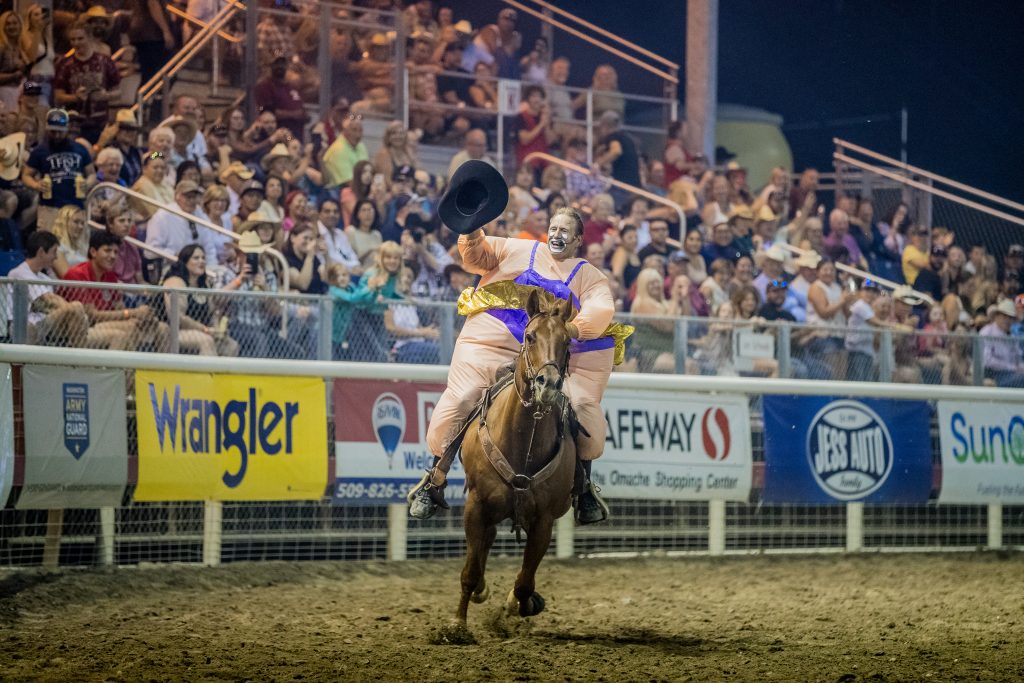
JJ Harrison
Rodeo Clown
I tried all events but Bull riding was what I really loved… but due to the fact I’m a big sissy… I stuck with Roping” He found success roping but laughs off his career to a really fun road trip.
JJ has taught middle school for 8 years and enjoys every second he spends with kids. “I never want to grow up and the best way to do that is hang with kids.” JJ has been to over 120 rodeos performances in only 3 years time.
He has become one of the most sought after rodeo clowns in the Northwest and shows no signs of stopping. If you want high energy and constant entertainment in your arena…this is the guy. “I always worry that people will someday realize…it’s not an act….it’s just who I am….”
Erick Schwindt
Bullfighter
Erick Schwindt, originally from Lyons Oregon now calls Prineville Oregon home. Erick has been one of Omak Stampede’s bullfighters since 2015. Erick has been fighting bulls since he was 13. He owes a lot of his success to his wonderful family, Kim & Kevin Schwindt and his older brother Billy who have supported him from the start.
Highlights of Ericks Career include:
- 2008 Fought the National Jr. Bull Riding Finals
- 2011 Oregon High School Rodeo Finals
- 2011 Livingston TX Protection Match Champion
- 2011 Ft Worth TX Protection Match Champion
- 2012 Texarkana TX Protection Match Champion
- 2012 Pasadena TX Freestyle Champion
- 2012 Livingston TX Freestyle Champion
- 2012 Ft Worth TX Protection Match Champion
- 2012 Benny Binion Bucking Stock Sale
- 2014 Rob Smets, Miles Hare Invitational Bullfight Champion Liberty TX
- 2014, 2016 JDRF Jones Freestyle Reserve Champion Spanish Forks
- 2021 Columbia River Circuit Finals Bullfighter
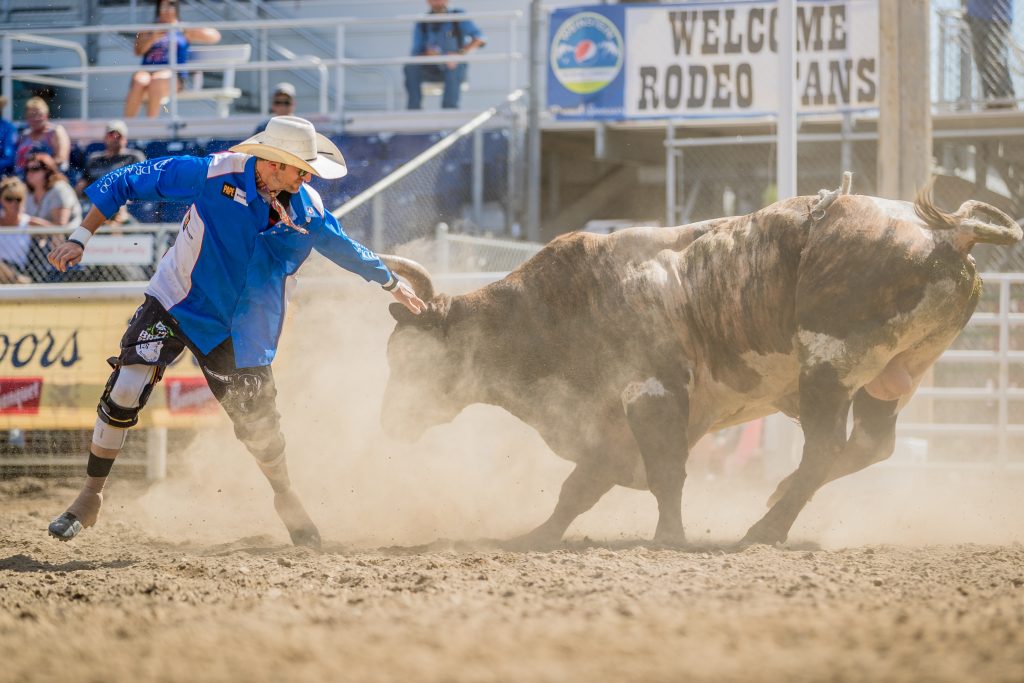
Logan Blasdell
Bullfighter
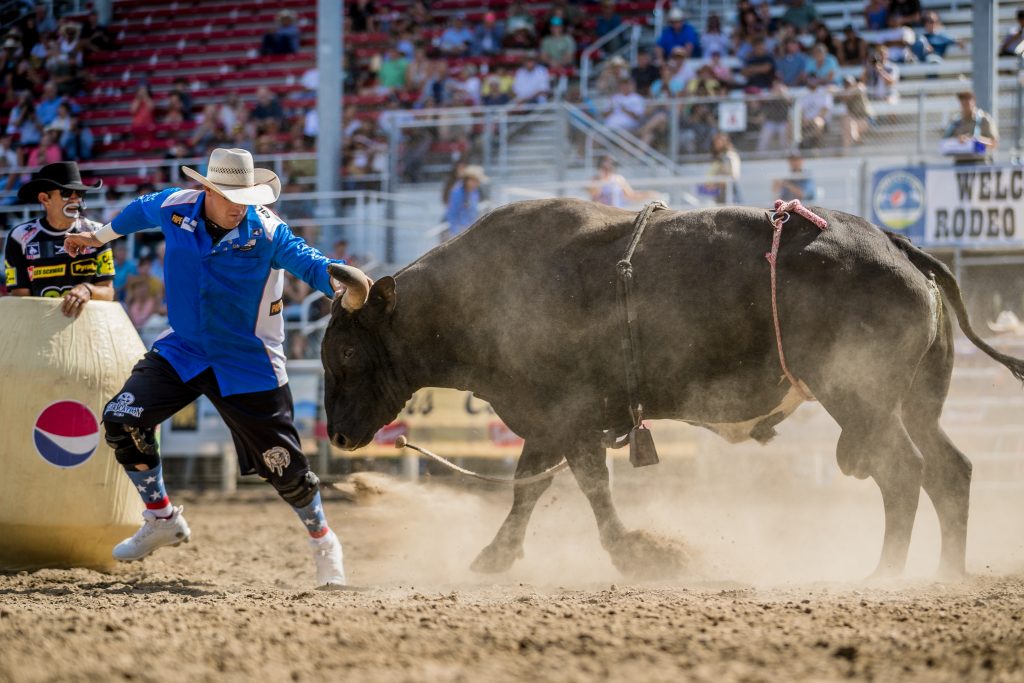
Hello, my name is Logan Blasdell. I am from the heart of Central Oregon in Prineville. I am 28 years old, and have been fighting bulls professionally with the PRCA since 2012.
In May of 2016, I married Kaley Mae Hook, owner of KMH bucking bulls in Shandon, California. On February 14, 2017 we had our first son Ridge Thomas Blasdell.
Some accomplishments in my professional career consist of winning the Benny Binion NFR bull sale protection match in 2012, the Rex Dunn memorial bullfight in 2014, and being a 2 time protection match champion at the Fort, Worth, TX bull sale. I’ve been fortunate to work in some amazing rodeos in: Prineville OR, Central Point OR, Cheney WA, Joseph OR, Bakersfield CA, Lakeside CA, etc. I am honored to add Omak, WA to my list of rodeos.
Thank you for having me, and I can’t wait to work the Omak Stampede!!


